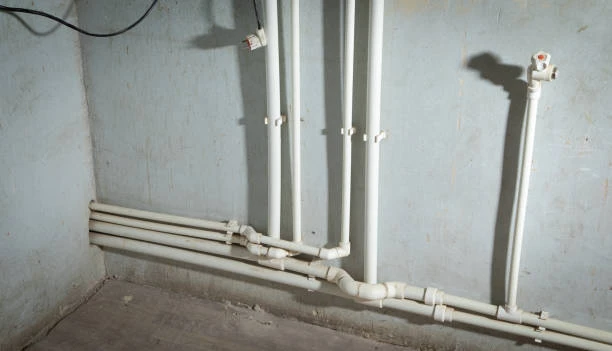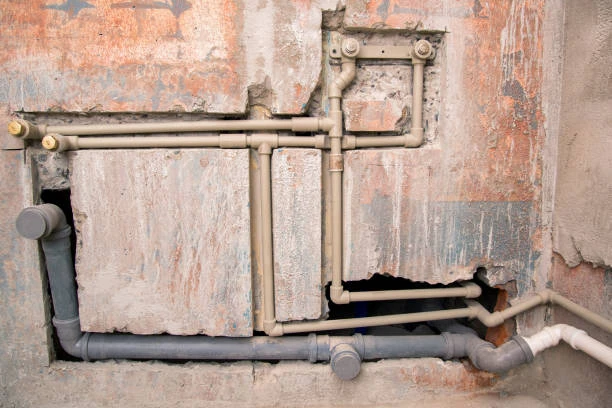PPR pipes, or Polypropylene Random Copolymer pipes, are increasingly favored for their durability, resistance to corrosion, and lightweight nature. The production of these pipes requires sophisticated machinery and a streamlined process. This article explores what a PPR Pipe production line is, detailing its components, stages, benefits, and challenges.
What are PPR Pipes?
Composition and Properties
PPR pipes are made from a specific type of polypropylene that enhances their strength and performance. This composition allows them to withstand high temperatures and pressures, making them suitable for various applications, including plumbing and industrial systems.
Common Applications
PPR pipes are widely use in residential and commercial plumbing, heating systems, and irrigation. Their resistance to chemical corrosion and scaling makes them ideal for transporting hot and cold liquids.
Understanding the PPR Pipe Production Line
Overview of the Production Process
The production line for PPR pipes is design to convert raw polypropylene materials into finished pipes through a series of carefully controlled steps. Each stage is critical to ensure the final product meets industry standards.
Key Components of a PPR Pipe Production Line
A typical PPR pipe production line includes the following components:
- Raw Material Feeding System: For transporting polypropylene granules to the extruder.
- Extruder: Melts and shapes the raw material into pipe form.
- Cooling System: Solidifies the extruded pipe.
- Cutting Machine: Cuts the pipe into specified lengths.
- Quality Control Station: Monitors product quality throughout the process.
Stages of the PPR Pipe Production Process
Raw Material Preparation
The process begins with the preparation of raw materials, where polypropylene granules are fed into the extruder. The quality of these materials is crucial for producing high-quality pipes.
Extrusion Process
In the extrusion stage, the polypropylene is heated and melted in the extruder, then pushed through a die to form the pipe shape. This stage requires precise temperature control to ensure even melting and shaping.
Cooling and Sizing
Once extruded, the pipes are cooled in a water bath to solidify their shape. Proper sizing equipment ensures that the pipes meet the required dimensions and tolerances.
Cutting and Packing
After cooling, the pipes are cut into predetermined lengths by cutting machines. Finally, the finished pipes are pack for storage or shipment, ready for distribution.
Machinery Used in PPR Pipe Production
Extruders
Extruders are the heart of the production line, melting and shaping the polypropylene into pipes. Modern extruders are equipped with advanced controls for temperature and pressure.
Cooling Systems
Cooling systems, typically involving water baths, are essential for solidifying the extruded pipes quickly and uniformly, preventing warping or deformation.
Cutting Machines
Cutting machines ensure that pipes are accurately sized. Some machines can even handle automatic length adjustments based on production requirements.
Quality Control Equipment
Quality control equipment monitors various parameters during production, ensuring that the pipes meet all specifications and standards.

Benefits of an Efficient PPR Pipe Production Line
Increased Production Efficiency
An optimized production line can significantly increase output, allowing manufacturers to meet rising demand without compromising quality.
Cost-Effectiveness
Efficiency in production leads to reduced waste and lower operational costs, making it financially beneficial for manufacturers.
Improved Product Quality
With advanced machinery and stringent quality control, manufacturers can consistently produce high-quality PPR pipes, leading to higher customer satisfaction.
Challenges in PPR Pipe Production
Technical Issues
Production lines can face technical issues such as equipment malfunctions or process inconsistencies, leading to production delays and increased costs.
Material Quality Control
Ensuring the quality of raw materials is critical. Any impurities or inconsistencies can result in defects in the final product.
Machine Maintenance
Regular maintenance of machinery is essential to prevent breakdowns and ensure smooth operation. Neglecting maintenance can lead to costly downtime.
Innovations in PPR Pipe Production
Automation and Smart Technologies
The integration of automation and smart technologies in production lines is revolutionizing the industry. These innovations enhance precision and reduce the likelihood of human error.
Sustainable Manufacturing Practices
As environmental concerns grow, manufacturers are adopting sustainable practices, such as using recycled materials and reducing energy consumption in production.
Conclusion
A PPR Pipe production line is a complex system design to transform raw polypropylene into high-quality pipes through a series of controlled processes. By understanding its components, stages, and challenges, manufacturers can optimize their production lines for efficiency and quality.
FAQs
How long does it take to produce PPR pipes?
The production time varies depending on the line’s efficiency, but it typically takes a few hours to complete a batch.
What are the advantages of PPR pipes over other materials?
PPR pipes are lightweight, resistant to corrosion, and have a longer lifespan compared to traditional materials like metal or PVC.
Can PPR pipes be recycled?
Yes, PPR pipes are recyclable, making them an environmentally friendly option for plumbing and construction projects.
What is the typical lifespan of PPR pipes?
PPR pipes can last over 50 years when installed and maintained properly.
How do I select a PPR pipe production line?
Consider factors such as production capacity, machinery quality, and the specific requirements of your intended applications when selecting a production line.

















